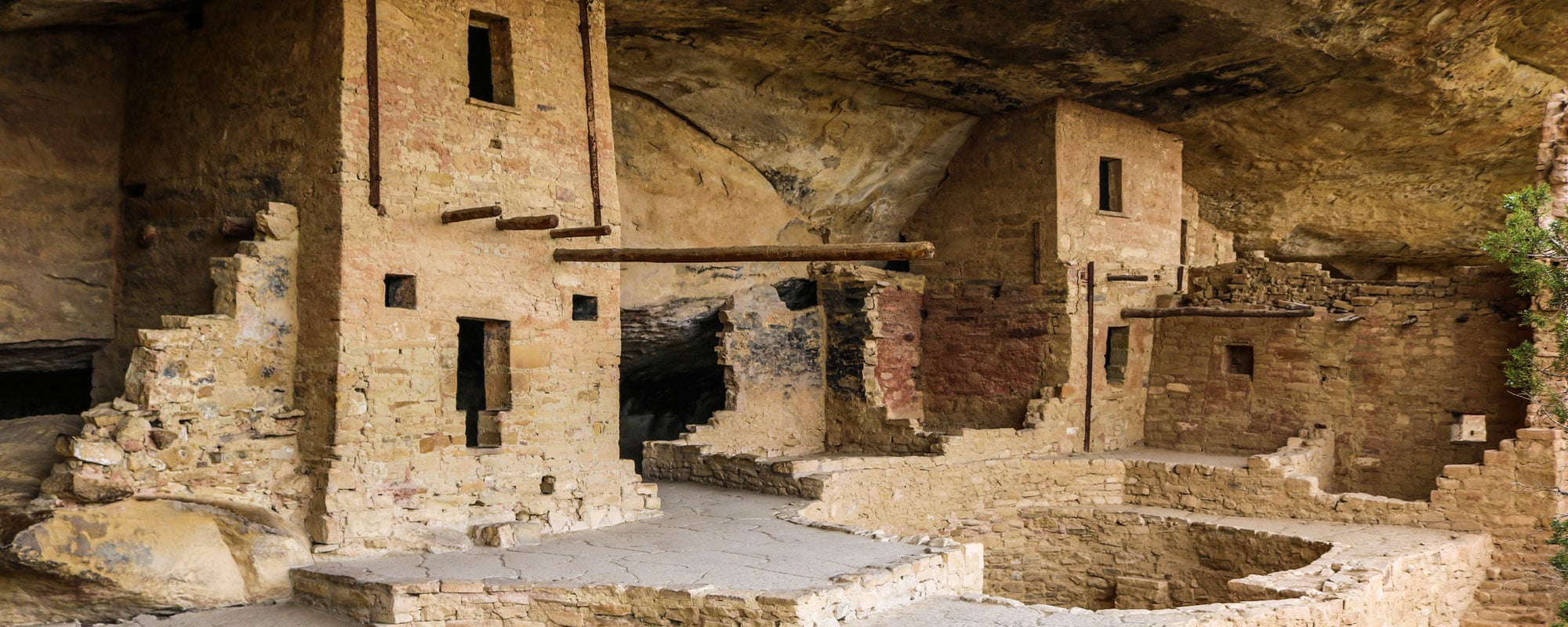Created mainly to protect the area’s Native American heritage, Mesa Verde National Park features almost 5,000 archaeological sites, including no fewer than 600 cliff dwellings such as the famous Balcony House and Cliff Palace.
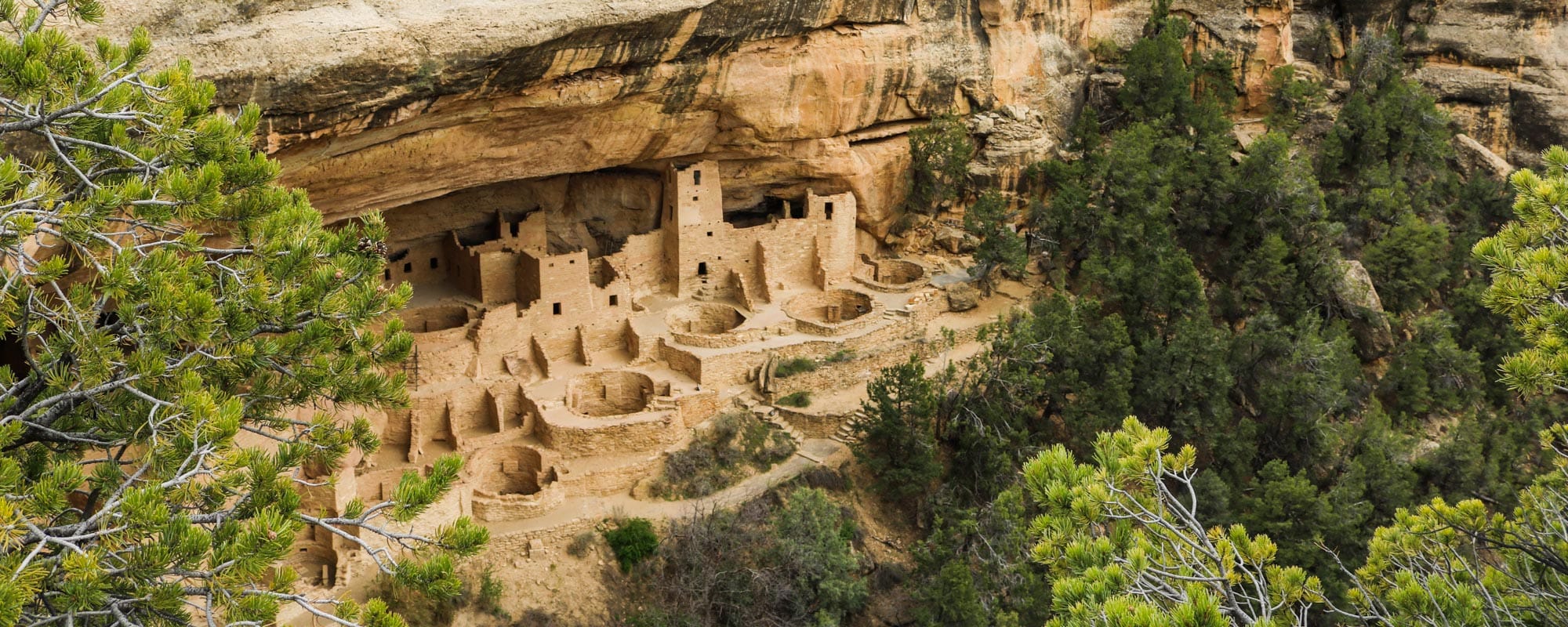
Its name Spanish for “green table”, Mesa Verde is somewhat of an exception among the national parks in America.
It’s one of very few parks that don’t attract people because of their spectacular landscapes, wildlife or adventurous activities. Instead, it draws in visitors who want to learn about and explore Native American history and culture.
Basically all attractions in Mesa Verde National Park are man-made and cultural in nature. They offer visitors an astonishing insight in the lives of the Ancestral Puebloan people, the predecessors of the modern Native Americans in the Southwest.
Nomadic Paleo-Indians have inhabited the Four Corners region for almost 10,000 years, following the seasons and moving in and out of the region. From 1,000 BC, the Basketmaker Culture emerged, developing into the Ancestral Puebloan Culture by 750 BC.
Those Ancestral Puebloans thrived in the region, eventually settling down in the Mesa Verde area around 550 AD. They built the first pueblos on the mesa’s plateaus, primitive (semi-)submerged dwellings.
Their construction skills improved over time and, at the end of the 12th century, they started constructing huge, well-designed cliff dwellings underneath the mesa’s rims.
It’s these cliffs dwellings Mesa Verde National Park is so famous for.
The Ancestral Puebloans mysteriously abandoned their homes sometime around the late-1200s, leaving behind extensive villages, which over the centuries became ruins.
Just because of this rich Mesa Verde history and abundant archaeological sites—almost 5,000 of them, including no fewer than 600 cliff dwellings—, the park was designated as World Heritage by UNESCO in 1978.
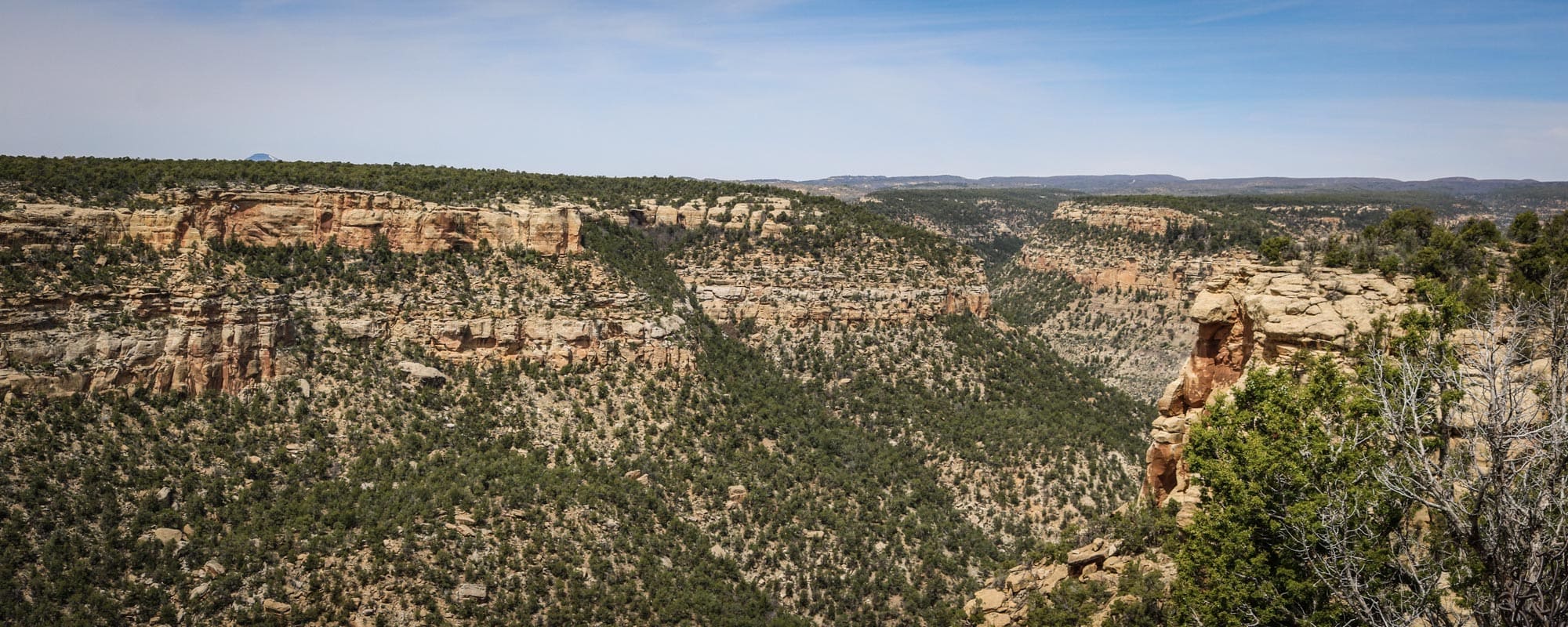
This Mesa Verde National Park information page contains affiliate links. You can read more about our Terms of Use / Disclosure here.
Highlights of Mesa Verde National Park
Mesa Verde consists of a few different mesas. Two of them, Wetherill and Chapin Mesas, are the park’s two touristic focal points.
If you only have a day in Mesa Verde National Park, I recommend just sticking to Chapin Mesa, home to the largest concentration of Mesa Verde highlights and a couple of great hiking trails. Moreover, the road to Chapin Mesa is open year-round, while Wetherill Mesa is only accessible from May through September, weather permitting.
On the way from the Visitor Center and at Chapin Mesa, these are the places you should by no means skip. From history museums to scenic hikes and iconic ruins, they are the very essence of Mesa Verde National Park.
- Visitor and Research Center – Exhibits, bookstore, tickets to guided cliff dwelling tours, restrooms, free Wi-Fi
- Park Point Overlook – Highest point in the park, offering spectacular views
- Chapin Mesa Archaeological Museum – Introductory movie, bookstore and gift shop, exhibits and dioramas, snack bar, drinking water, post office
- Spruce Tree House – Easily accessible and best-preserved cliff dwelling in the park
- Petroglyph Point Trail – Pleasant hike to a rock wall covered with Native American petroglyphs
- Mesa Top Loop – Self-guided 6-mile (10-kilometer) loop drive past six centuries of Ancestral Puebloan architecture and a few superb viewpoints
- Balcony House – Imposing cliff dwelling, tour involves climbing a huge ladder and squeezing yourself through a narrow tunnel
- Cliff Palace – Most famous and largest cliff dwelling in Mesa Verde National Park, visible on guided tours or clearly from various lookouts
- Far View Sites – Ruins of five villages that formed an agricultural community
This park is surprisingly accessible. It lies pretty much on the borders between Colorado, Utah, Arizona and New Mexico—only a short distance from the Four Corners. It’s merely 2,5 hours by car from Monument Valley and just over 2 hours from Moab, Utah.
Especially the latter town is particularly interesting. Situated at the doorstep of both Arches National Park and Canyonlands National Park, you can also use it as a base for a road trip to Mesa Verde.
In fact, if you happen to be road tripping to Utah’s national parks, I encourage you to take the time to spend a day in Mesa Verde National Park, too. Its historic and archaeological value is overwhelming.
It’s absolutely worth the detour and arguably the best place in America to learn about the Ancestral Puebloan culture.
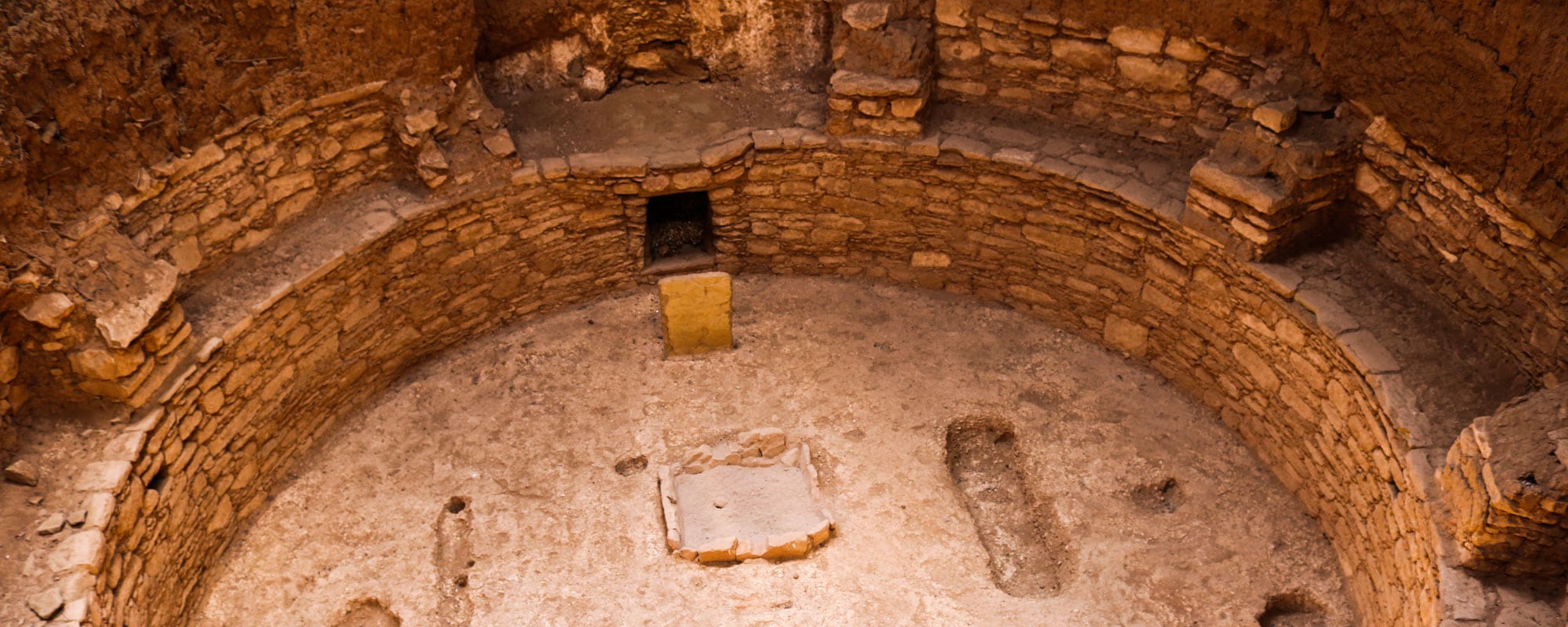
Accommodation Near Mesa Verde National Park
There is one campground (Morefield Campground) and one lodge (Far View Lodge) in the national park. Additionally, you’ll find a plethora of accommodation in nearby towns like Cortez and, especially, Durango.
Booking.com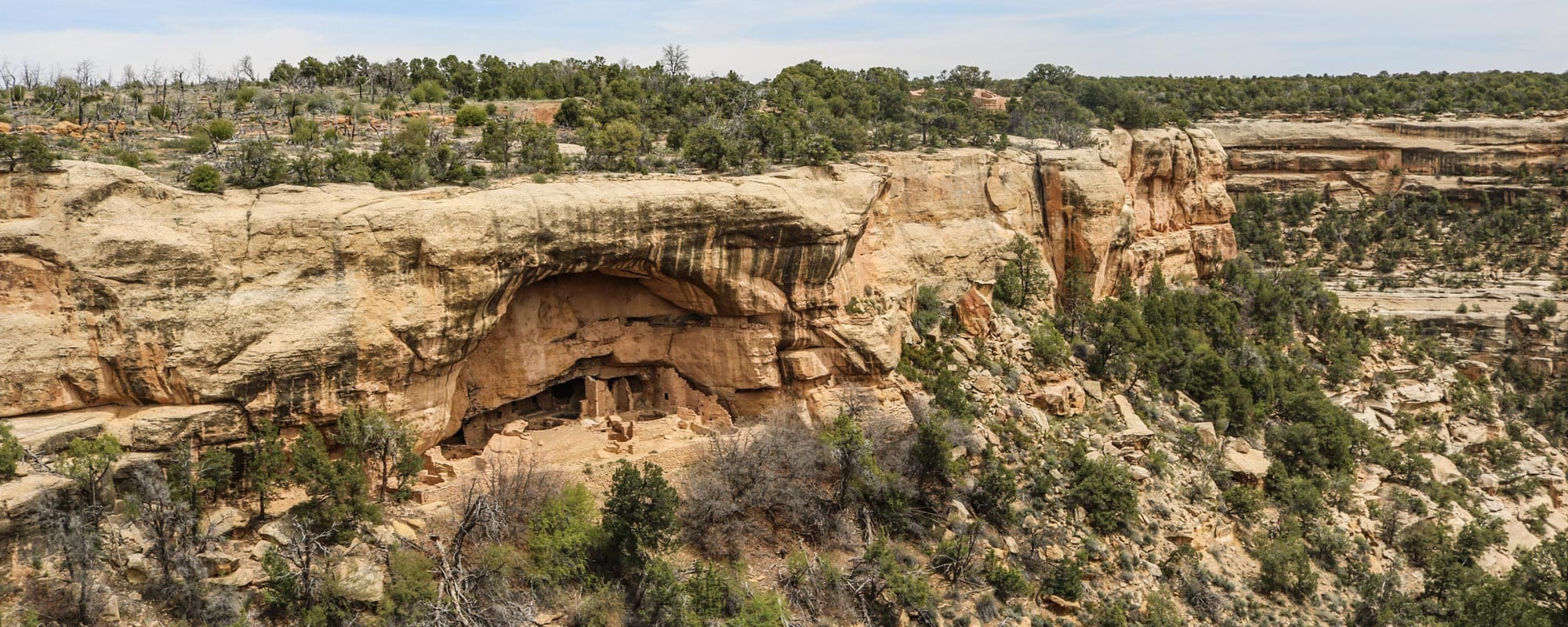
Useful Info
Location: Southwestern Colorado
Nearest Towns: Cortez and Durango
Area: 82 square miles (52,485 acres)
Annual Visitors (2022): 499,790
Features: Almost 5,000 archaeological sites, including 600 Ancestral Puebloan cliff dwellings, canyons and mesas
Top Attractions: Ancestral Puebloan cliff dwellings and other ruins, petroglyphs
Popular Activities: Cliff dwelling tours, hiking
Suggested Stay: 1-2 days
Campground: Morefield Campground (267 sites)
More Information: National Park Service
Nearby National Parks:
